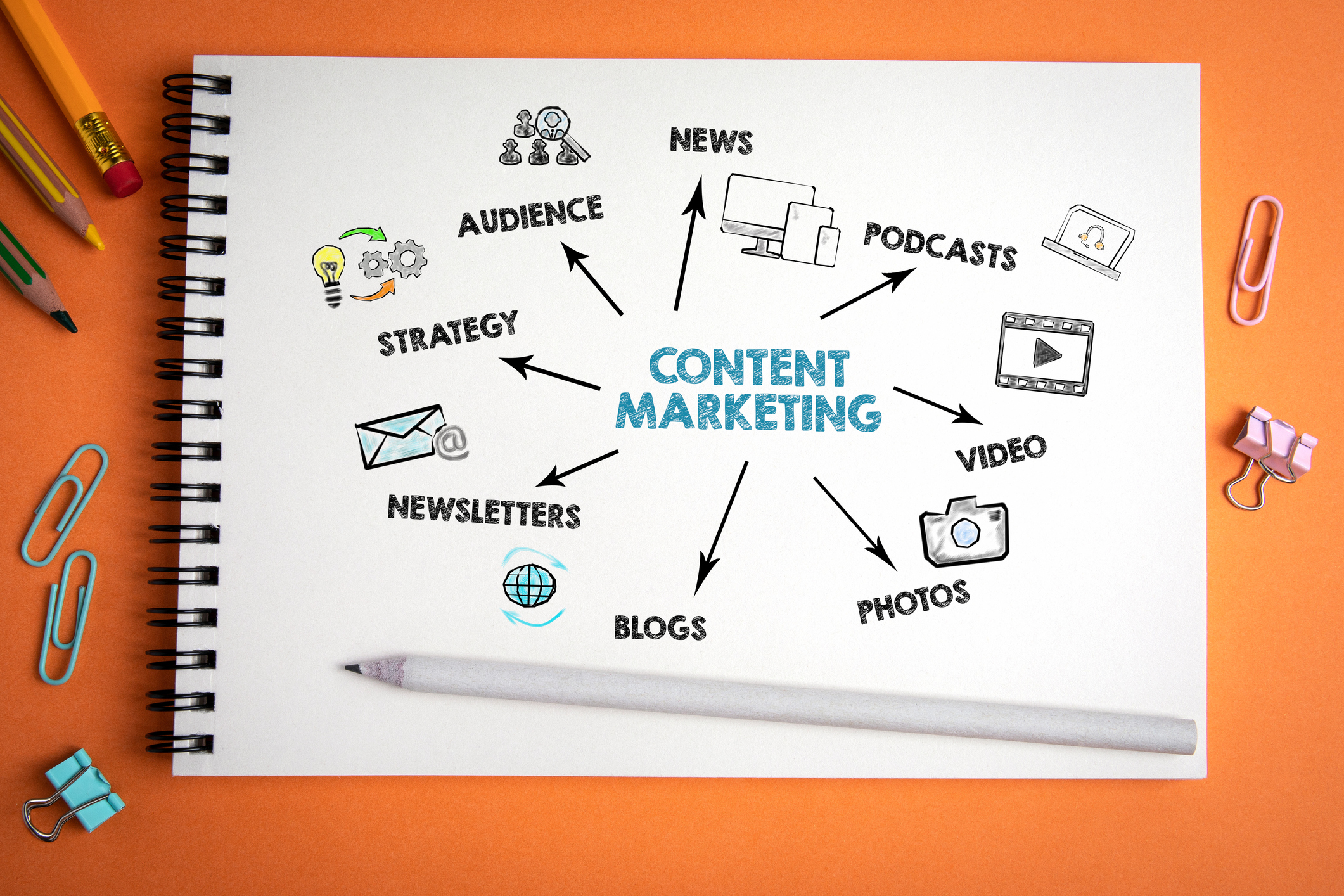Table of Content
Table of Content
Choose the Right Ad Format
Best Content Marketing Guide for Startup Founders

by Hira
- Saas marketing
- August 8, 2024

Every startup wants leads, and it wants them quickly. One way to achieve this is by running campaigns and cold outreach, but that requires constant budget allocation.
What if there was a self-sustaining strategy to get you quality leads on a consistent basis? Well, it actually exists – it’s called content marketing. The downside is that it requires you to have clear answers to critical questions, and finding those answers is not always straightforward. To put it simply, here’s how it works:
Producing content allows you to get impressions 🡪 more impressions create chances for drawing a larger amount of traffic 🡪 which leads to a larger number of visitors.
It sounds like just a numbers game dependent on chance, right? But it’s actually more than that. You have some control over the type of visitors you can attract to your website. The more aligned your content is with the concerns and pain points of your audience, the more relevant your traffic will be. These visitors are the people who are actually likely to buy from you.
Why Content Marketing Matters
Content marketing helps drive traffic to your website and convert visitors into customers. However, it requires a well-structured approach to be effective. The five levels of awareness, a concept from Eugene Schwartz’s book “Breakthrough Advertising,” offers a framework for tailoring content to different stages of the customer journey.
The Five Levels of Awareness
Understanding these five levels is key to tailoring your content effectively:
Level 1: Unaware
At this stage, people don’t realize they have a problem. The goal is to capture their interest with broad, general content. Examples include:
Level 2: Problem Aware
Individuals at this level recognize they have a problem but don’t know the solution. Create content that addresses their pain points, such as:
Level 3: Solution Aware
People at this stage know solutions exist but haven’t chosen one yet. Provide comparisons and lists to help them decide:
Level 4: Product Aware
These potential customers know about your product but need more information to make a decision. Content ideas include:
Level 5: Most Aware
These are experts in the field or partners who can influence others. Focus on partnership opportunities and detailed use cases:
Starting Your Content Strategy
For early-stage startups, focusing on solution-aware and product-aware content is crucial. These potential customers are closer to making a purchase decision, which means your content can directly influence conversions.
Solution-Aware Content: Create articles that help users understand their options and why your product is the best fit.
Product-Aware Content: Develop detailed comparisons and use cases to educate prospects about your product’s unique benefits.
Leverage several content distribution channels
To maximize the reach and impact of your content, it’s essential to utilize a variety of distribution channels. Each channel offers unique advantages and can help target different segments of your audience.
- Blogs are best for publishing educational and informational content and establishing your authority in the respective domain.
- Landing Pages are ideal for conversion-focused content.
- Social Media is a versatile channel that allows flexibility for various content types appropriate for several awareness stages.
For details on content distribution channels, read Content Marketing Basics Covered.
Determine the Highest-performing Channels
Analyze the channels that bring the most traffic to your site.
Traffic Acquisition Report: Navigate to the “Acquisition” section in Google Analytics to view traffic sources, which are categorized as direct, organic search, referral, social, and paid search.
Review Referral Traffic: In Google Analytics, go to the “Acquisition” > “All Traffic” > “Referrals” section to see which websites are sending traffic to yours. This helps you identify key partners, backlinks, and promotional opportunities.
Implement Conversion Funnels on those Channels
Awareness Stage:
Capture the attention of potential customers who are just becoming aware of their needs or your brand.
Content Creation: Produce valuable and informative content that addresses common pain points or interests. This can include blog posts, educational videos, infographics, and social media updates.
Promotion: Use various channels to distribute this content widely. For example, share blog posts on social media, use SEO strategies to drive organic traffic, and engage with industry influencers to reach a broader audience.
Brand Awareness: Utilize paid advertising and sponsored content to increase visibility and attract a larger audience who may not yet be familiar with your brand.
Consideration Stage:
Nurture prospects who are evaluating their options and considering potential solutions.
Educational Resources: Provide detailed content such as eBooks, case studies, and webinars that offer in-depth information about your solutions and their benefits.
Lead Magnets: Create lead magnets like free trials, demos, or consultations to allow prospects to experience your offering firsthand.
Engagement: Engage with prospects through email marketing, targeted social media interactions, and personalized content that addresses their specific needs and questions.
Decision Stage:
Encourage prospects to take action and make a purchase or commit to your service.
Clear CTAs: Use strong and clear calls to action (CTAs) across all channels. This could include “Buy Now” buttons, “Request a Quote” forms, or “Sign Up” prompts.
Conversion Optimization: Optimize your landing pages and lead capture forms to ensure a smooth and straightforward process for completing purchases or signing up for services.
Incentives: Offer special promotions, discounts, or limited-time offers to motivate prospects to make a decision. Highlight the urgency and benefits to prompt immediate action.
Post-Purchase Stage
Retain customers and encourage repeat business or referrals.
Follow-Up: Implement follow-up email sequences to thank customers, provide additional value, and offer support.
Loyalty Programs: Introduce loyalty programs or referral incentives to encourage repeat purchases and generate positive word-of-mouth.
Feedback: Collect feedback to improve your offerings and address any concerns that may arise, enhancing overall customer satisfaction and retention.
As your brand gains recognition, you can expand to include problem-aware and unaware content to attract a broader audience.
When to Avoid Content Marketing
If you haven’t secured your first 10 customers, content marketing might not be your best bet. Early on, focus on quick-win strategies like cold outreach and engaging in forums. Content marketing is a long-term investment that pays off over months, not weeks.
Conclusion
Content marketing is a powerful tool, but it requires a strategic approach to be effective. By aligning your content with the five levels of awareness, you can create targeted content that guides potential customers through their journey.
For more insights on marketing strategies and to learn about additional approaches to grow your startup, explore further resources on marketing strategies that your competitors might be using.
